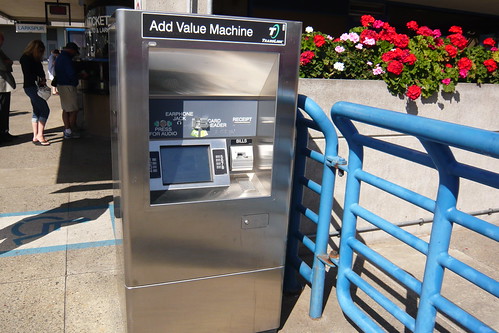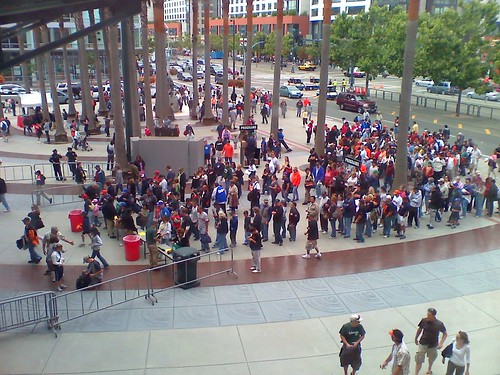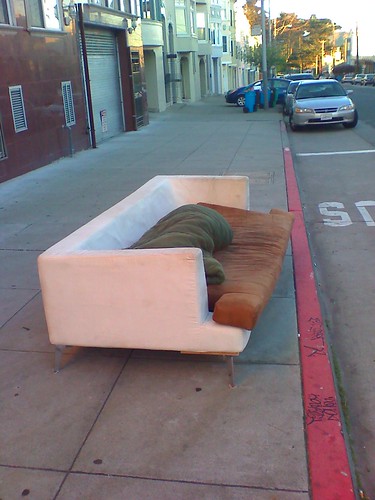In Clipper card news today, starting March 1st, in order to get a new Clipper card, the minimum initial e-cash purchase will increase from $2 to $5. The card is free until June 2011, but the MTC won't just freely give out the cards without a minimum value.
Clipper is enforcing this revised policy at all locations where cards are issued (automated machines and retailers).
For those needing to reload e-cash funds to their Clipper card, the policy is being revised that all Muni metro stations (the self-service machines) will increase their minimum Clipper card e-cash reloading minimum from $2 to $5. In-person retailers does not have a minimum requirement, thereby you could add a minimum value of just one penny.
These changes are due to the people who abuse the Clipper card's negative balance policy. A passenger can rip-off taxpayers by getting a card with a very small amount of e-cash on the card, and at the end of the journey (costing more than the balance on the card), throw away the card and get a new one. In BART's case, long distance rides costs a lot, thereby ripping-off the agency; the agency lost $170K in people abusing the Clipper system.
Akit's Opinion
This is not enough to stop the abuse by raising the minimum e-cash to $5 for a new card. Caltrain and BART passengers that ride long distances can still exploit the Clipper card's negative balance by getting a ton of free cards with the minimum balance of $5 required to obtain a card.
If Clipper and the MTC wants to stop the abuse, they need to stop giving out free cards and charge a $5 fee to obtain one, plus a minimum of $10 for it's initial e-cash load or the purchase of a transit pass. The minimum price would then be raised to $15 to get a card.
Why $15? It's simple, no one-way transit ride costs more than $15. Caltrain is the most expensive at $12.50 (SF to Gilroy), and BART's most expensive fare is $10.90 (Pittsburg/Bay Point to SFO Airport), thereby when a passenger's first ride on the new card exceeds $10 and goes negative, it would be a waste of money to throw away the card because of the $5 fee just to obtain the card. But also remember, once the card goes into the red (negative balance), it cannot be used again unless if the value on the card is replenished.
This is only for adult cards as they are distributed without applying or registering for one. Youth and senior Clipper cards have very strict policies as only one card can be issued per person because they are required to apply for a card and are specially encoded with their age to receive proper transit discounts.
I do not understand why the MTC wants to raise the minimum e-cash RELOADING at Muni metro stations to $5 when in-person retailers don't have a minimum reloading requirement. Either have a minimum loading fee at all points of sale or not.














